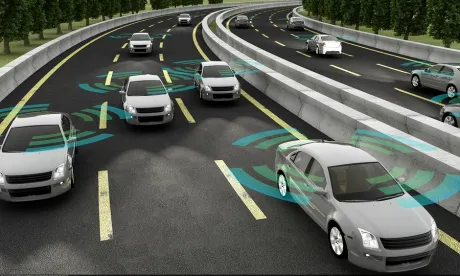If you talk to anyone involved in the automotive and transit sectors, the conversation will inevitably touch on how impactful autonomous vehicles and next-generation transit will be on our day-to-day lives. In our February 8, 2018 article, Autonomous Vehicles and Ride Sharing Will Reshape Our Buildings, Our Cities, and Our Lives, we discuss how urban planners and developers are starting to plan ahead and future proof their cities and developments for an autonomous and next-generation transit future. But, the impact of this new technology will reach beyond simply future proofing developments, but shape how we as drivers and passengers, and how cars, interact with the road around us, how land is used and developed, and how the government funds transit projects.
In this future, urban planners and developers speculate it’s ever more likely consumers might not have a permanent car, opting instead for a mixture of next-generation last mile transit such as bikes and scooters, combined with an autonomous Lyft or Uber like service for more long-distance travel. In turn, these transit modalities will reduce the need forexpensive and expansive parking structures, parking lots, service stations, and other automotive related real-estate necessities. This means land will be reclaimed for urban and suburban dwellers to use this new space as greenspaces, office spaces, restaurants, and living quarters. It means rethinking how pedestrians move around a city unencumbered by the need to accommodate parking and high moving traffic as more and more roads are repurposed into pedestrian ways.
The influence these changes will have on our urban surroundings will be less noticeable than parking structures converted to apartments and parking lots turned into green-space, yet they may be even more impactful on the way we commute day to day. In our current, human driven automotive environment, we take for granted the need for stoplights, stop-signs, and wide boulevards to accommodate a disconnected series of transit modalities. But in an environment largely driven by autonomous and computer driven transit, cars will be communicating with each other, reducing the need for wide boulevards as cars and busses communicate in anticipation of lane changes, mergers, turns, and road hazards. High Occupancy Vehicle lanes will likely be converted to autonomous lanes, allowing for autonomous vehicles to move at higher speeds, unencumbered by the unexpected stops, lane changes or distractions presented by human drivers.
As people drive less, and move more efficiently by means of autonomous transit modalities, it also means the wear and tear imposed on the infrastructure may be reduced. But as this is reduced, so will be the taxes collected by traditional taxing regimes to fund the infrastructure improvements our roads desperately needs. This won’t necessarily be due to people driving less miles, but as auto-manufactures move closer to fully electronic and hybrid drivetrains to meet ever more ambitious eMPG and MPG targets and use these drivetrains in autonomous systems, revenue collected will be reduced. This begs the question of how transit authorities, including the federal government, plan to make up declining gas-tax revenue, as electronic vehicle technology becomes the mainstream mode of powering autos and trucks on American roads. It is something these authorities need to take more seriously as major auto suppliers and manufactures continue to accelerate towards a more autonomous and more electrified future.



 />i
/>i

